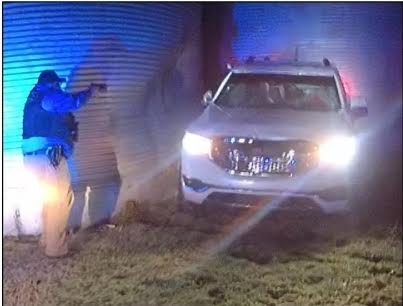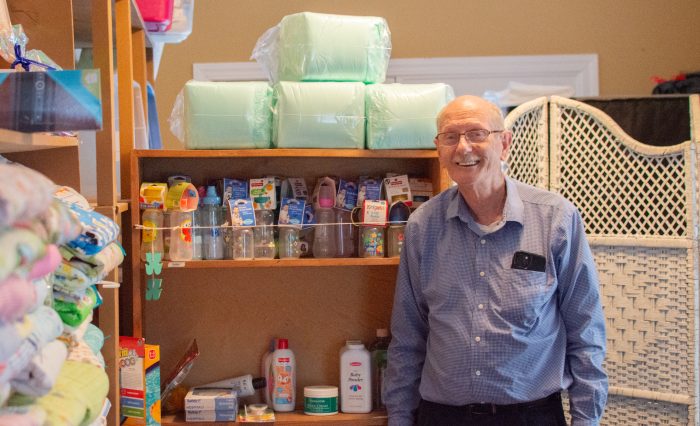Renter’s insurance key to protecting property
Published 12:00 am Sunday, July 8, 2007
There’s no guarantee that any among the 53 percent of Bowling Green residents who rent their homes are safe from fire, theft or disaster – even those who rent from the mayor.
“I was one of those naive people who said, ‘Oh, nothing will ever happen,’ ” said Alexia Terrell, who has rented an apartment from Mayor Elaine Walker and her husband, Dorian, for a year. “And then my building caught on fire.”
Trending
On the evening of June 25, a light fixture on the top floor of the Walkers’ house at 1302 State St. apparently sparked a fire in the attic. Bowling Green firefighters arrived quickly and confined the flames to the attic, Elaine Walker said. The building will need a new roof, ceiling and electrical work, but that wasn’t the limit of the damage. Between fire, smoke and water, renters’ belongings in the building’s four apartments suffered varying degrees of damage, she said.
“The one apartment that was underneath the bulk of the fire, pretty much everything in it was destroyed,” Walker said. “He didn’t have any insurance.”
Terrell, a 22-year-old Western Kentucky University senior from Hendersonville, Tenn., was luckier. She lived on the first floor.
“I was as far away from the fire as you could get,” she said. “I just had some smoke damage. It’s just a lot of tedious cleaning.”
Had the fire been worse, however, Terrell would have been in the same shape as her upstairs neighbor. She didn’t have renter’s insurance either, though after her close call, she plans to check it out.
“I had briefly heard of it, and now after the fire I’ve considered getting it,” Terrell said.
Trending
In 2006, the Bowling Green Fire Department responded to nine structure fires and 20 cooking fires in apartment buildings, said Marlee Boenig, the department’s public information officer – and that doesn’t count single-family rental houses, duplexes, dorms, or fraternity and sorority houses.
Between them, those fires did an estimated $129,000 damage to residents’ property, she said. It’s unlikely that much of that damage was covered by insurance, and much of that loss was probably borne by Western students like Terrell.
“I don’t know anybody who has renter’s insurance, actually,” she said.
John Drott, an Allstate agent at Family Protection Group insurance office, estimated that perhaps 10 to 15 percent of people who rent apartments in Bowling Green have their belongings insured.
“Just recently we’ve seen a lot more interest in it,” he said. “I’m not sure what’s driving that.”
Dry summer conditions allow more opportunities for fire, so maybe media coverage of that and reports of burglaries are provoking the added interest, Drott said.
Renter’s insurance is usually worth the cost, said Ronda Sloan, director of communications for the Kentucky Office of Insurance.
“It’s something that people generally don’t think about until they have a loss,” she said. “Can you afford to lose everything you own? That’s kind of the question people need to ask.”
Homeowners usually have to buy insurance as a condition of their mortgage, but renters have to seek it out on their own, Sloan said. General buying tips apply: read the policy, question the agent closely, find out if the policy covers actual cash value or replacement costs, and make sure there’s enough coverage to pay for jewelry and electronics, she said.
“As with any type of insurance, you need to understand exactly what you’re getting,” Sloan said.
Premiums are based on a combination of factors including the quality of items insured, the apartment’s location and the condition of the building, but often run from $140 to $240 a year, Drott said.
“Renter’s insurance is very inexpensive,” he said. “The smallest amount that we can sell for a renter’s insurance policy is about $20,000 to $21,000 worth of coverage.”
Anywhere from $10,000 to $20,000 worth of coverage is a popular amount for apartment dwellers, said State Farm agent Mike Reynolds.
“Twelve dollars a month to $20 a month buys a lot of coverage,” he said.
Renter’s insurance policies can cover the actual replacement cost of a tenant’s belongings, or just reimburse the (usually lower) amount that the person originally paid for them, Drott said.
“Replacement cost is like going shopping at a department store. Actual cash value is like going to a garage sale,” he said.
Renter’s insurance can cover more than just property damage, Drott said.
“Some of the things people overlook are the liability and medical payments that can be made,” he said. If a houseguest drops a cigarette on a tenant’s couch and burns down the apartment, the tenant can be held liable by the landlord, Drott said. It can also cover injuries in the apartment, whether or not the tenant is legally liable.
Reynolds agreed with Drott’s 10 percent to 15 percent estimate, and noted he can sell insurance that protects renters against theft and vandalism too.
“Theft is the biggest exposure we pay claims under,” Reynolds said.
Small but big-ticket items such as cameras, DVD players, computers and MP3 players are particularly good items to insure against theft, but protection is also available against things most tenants wouldn’t think of, such as damage from leaky waterbeds, he said.
“One of the biggest things we see now is waterbed liability,” Reynolds said.
Terrell said she’s going to ask her parents if her belongings would have been covered under their homeowner’s policy. According to Drott, she’ll probably find that she’s not. Most homeowner’s insurance policies extend some coverage to belongings kept off-premises, such as in a car or taken on a trip, and that frequently applies to students away at college – but that only applies in short-term housing, such as a dormitory or fraternity house, he said. Apartments like Terrell’s are considered independent residences, and so aren’t included; and coverage extended to children usually ends at age 21, Drott said.
“If you’re not living in a school facility, you probably need renters’ insurance,” he said.
Within the dorms at Western, students can file a reimbursement claim with the state if their property is damaged in an incident that’s the university’s fault, said Howard Bailey, associate vice president for Student Affairs and Development. Otherwise, students are on their own; the university carries no insurance on its students’ possessions.
“We advise that a student do so,” Bailey said.
Students who move off campus into apartments often assume that their parents’ homeowners insurance will continue to cover them, only to find out too late that it doesn’t, he said.
Even when tenants buy renter’s insurance, they often forget to pay premiums and let the policy lapse, not remembering until they need it, Reynolds said.
“That happens a lot, unfortunately,” he said.
Walker said that after the fire, she called her son and daughter to make sure that they had renter’s insurance. Both already did – and now two of her daughter’s friends have bought it as well, she said.
Her son pays $125 a year for $35,000 worth of coverage; he didn’t think he needed that much, but upon totaling the actual replacement cost for his belongings, realized that was probably pretty close, Walker said.
Terrell said that she’s going to investigate getting renter’s insurance soon, comparing coverage as experts suggest.
“You never know when something’s going to happen,” she said.






